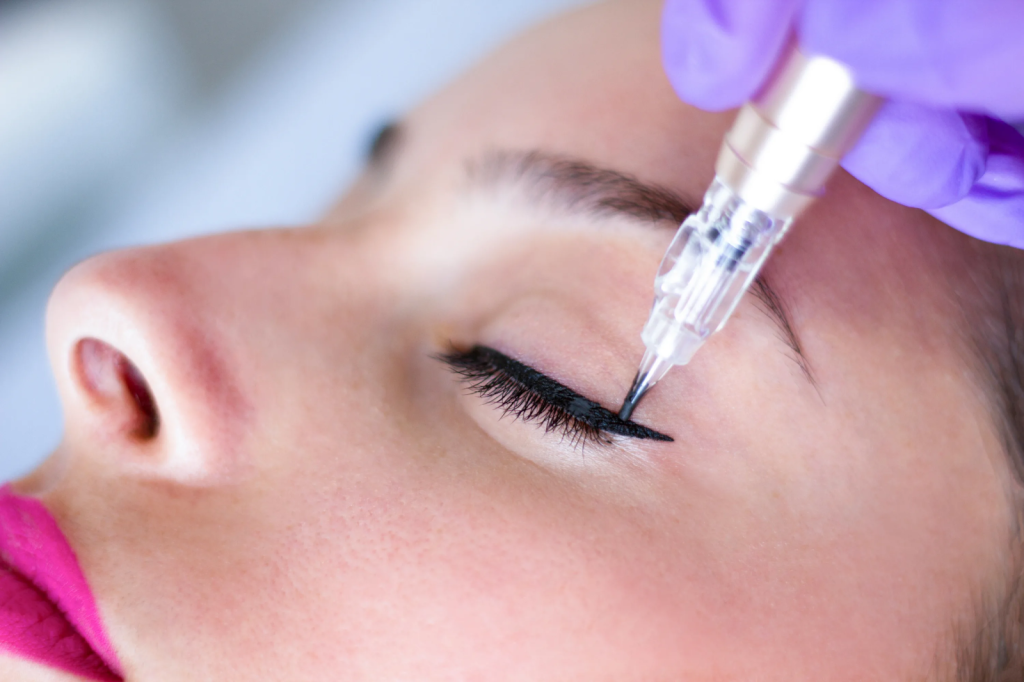Embarking on the journey of a lip tattoo cosmetic, commonly known as lip blushing, can be an exciting venture towards enhancing your natural beauty. While the procedure may offer the allure of permanently perfect pout, understanding what to expect during the healing process is crucial. Immediately after the procedure, your lips will experience several stages of healing, each presenting different symptoms and care requirements. From swelling and color changes to peeling and touch-ups, this article will guide you through the intricacies of the healing process, ensuring you’re well-prepared for a successful and comfortable recovery.

Immediate Aftercare: The First 24 Hours Post-Procedure
The first 24 hours after receiving a lip tattoo are pivotal for the initiation of the healing process. Patients typically experience a degree of swelling and redness as the lips react to the treatment. It is essential to keep the area clean and avoid any potential sources of contamination. Following your practitioner’s specific aftercare instructions is key to a seamless healing journey.
Swelling:
1. Expect moderate to significant swelling immediately after the procedure.
2. Use a clean, cold compress to help reduce swelling, being careful not to apply excessive pressure.
3. Keep your head elevated, even while sleeping, to minimize further swelling.
Managing Potential Oozing:
4. A slight oozing of lymph fluids is normal; gently blot it with a sterile gauze.
5. Avoid wiping the area, as this can remove the freshly embedded pigment.
Ice Pack Usage:
6. Apply ice packs wrapped in a cloth for short intervals (10-15 minutes) to soothe the area.
The First Week: Changes and Care Techniques
As the initial swelling subsides, your lips will undergo several more changes. A proper aftercare routine during the first week can greatly impact the final outcome of your lip tattoo.
Day-by-Day Healing: What to Expect in the First 7 Days
The healing process of a lip tattoo can vary from person to person, but typically includes the following phases:
- Day 1-2: Swelling peaks and then starts to subside. Lips remain sensitive and may feel tight.
- Day 3: Swelling further reduces, and the lips may begin to itch as they start to peel.
- Day 4-5: Peeling process continues, revealing lighter and more evenly colored skin beneath.
- Day 6-7: Most of the peeling concludes, and lips start showing signs of settling into their final color.
It is during this time that your aftercare routine should be strictly followed to avoid any complications or infections.
Maintaining Cleanliness:
7. Always wash your hands before touching the treated area to prevent infection.
8. Clean the lips with saline solution or an appropriate gentle cleanser as per the provided instructions.
Moisturizing and Product Recommendations:
9. Keep the lips lightly moisturized with a recommended healing ointment to aid in the recovery.
10. Avoid petroleum-based products or any balm that has not been approved by your technician.
Beyond the First Week: Seeing the True Color
After the initial week, your lips begin to settle into their new appearance, but the healing isn’t over just yet. Below you’ll find more on what to anticipate when the peeling has concluded.
As the top layers of your skin peel away, you may notice that the color of your lip tattoo appears lighter than expected. This change in color is a normal part of the healing process. It occurs as the pigment settles into the skin, and the full vibrancy of the color should return over time.
Peeling Phase and Pigment Loss:
| Days After Procedure | Expected Healing Phase |
|---|---|
| 7-14 | Most peeling should be complete; pigment may appear lighter than expected. |
| 15-30 | Pigment continues to settle, and true color starts to become apparent. |
| 31+ | Healing is largely complete, with the true color of the tattoo revealed. |
Avoiding Sun Exposure:
11. Do not expose your healing lips to direct sunlight; UV rays can alter the pigment and delay healing.
12. Use a lip-specific SPF once the initial healing phase is complete to protect the tattoo against sun damage.
Dealing with Discomfort and Preventing Infection
Some discomfort is to be expected after a cosmetic lip tattoo, but knowing what’s normal and what isn’t is essential. Proper care is not only important for comfort but also for preventing any infections that could compromise your results.
What Pain Is Normal:
13. A throbbing sensation or tenderness is common in the first few days post-procedure.
14. Over-the-counter pain relief can be taken, but consult with your technician or physician first.
Signs of Infection:
15. Be aware of symptoms such as excessive redness, pain, or pus, which are not normal and require immediate medical attention.
16. Follow the aftercare instructions carefully to reduce the risk of infection.
Tips for a Smooth and Successful Lip Tattoo Healing Process
To ensure that your cosmetic lip tattoo heals beautifully and maintains its intended appearance, here are some essential tips to keep in mind:
Do’s and Don’ts during the healing process play a significant role in the outcome of your lip tattoo. Stick to the do’s, such as staying hydrated, eating nutritious foods, and avoiding any activities that could introduce bacteria to the area.
- Do: Keep your lips clean and moisturized with the products recommended by your technician.
- Don’t: Engage in strenuous exercise for a few days post-procedure, to prevent sweat from interfering with healing.
Frequently Made Mistakes to Avoid During Lip Tattoo Healing
Knowledge is power when it comes to healing from a cosmetic lip tattoo procedure. Be mindful of the advice provided and steer clear from common pitfalls that can hinder the healing process.
Many people fall prey to misinformation which can lead to actions that jeopardize the results of their lip tattoo. Here’s a closer look at what to avoid:
- Touching or picking at the peeling skin on the lips.
- Using unapproved lip products that may contain harmful chemicals.

Conclusion
The process of healing after a cosmetic lip tattoo can be a test of patience and diligence. By following the post-procedure care instructions, understanding the stages of healing, and knowing what to avoid, you can aid your recovery and ensure the best possible result. Remember, the journey may come with a mix of emotions and discomfort, but the outcome—a beautiful and enhanced natural lip color—will be worth it.
FAQs
Q1: How long does the complete healing process for a lip tattoo take?
A1: A lip tattoo generally takes anywhere from 4 to 6 weeks to heal completely, but the initial intense healing happens within the first two weeks. It’s important to follow the aftercare instructions provided for the best results and to ensure proper healing.
Q2: Is it normal for the lip tattoo to look very dark initially?
A2: Yes, it is common for the color to appear significantly darker in the days immediately following the procedure. As the lips heal and the top layers of skin peel off, the color will soften to its intended shade.
Q3: Can I use normal chapstick or lip balm during the healing process?
A3: You should use only the ointment recommended or provided by your technician as some lip products may contain ingredients that can negatively impact the healing process.
Q4: When can I start wearing lipstick again after a lip tattoo?
A4: It’s usually recommended to wait until the lips are fully healed, which is typically after 4 to 6 weeks, before applying any traditional lip makeup products.
Q5: Will my cosmetic lip tattoo require touch-ups?
A5: Yes, cosmetic lip tattoos fade over time and will likely require touch-ups to maintain their color and shape. Touch-ups are often done every few years, depending on factors such as lifestyle, skin type, and adherence to aftercare instructions.






